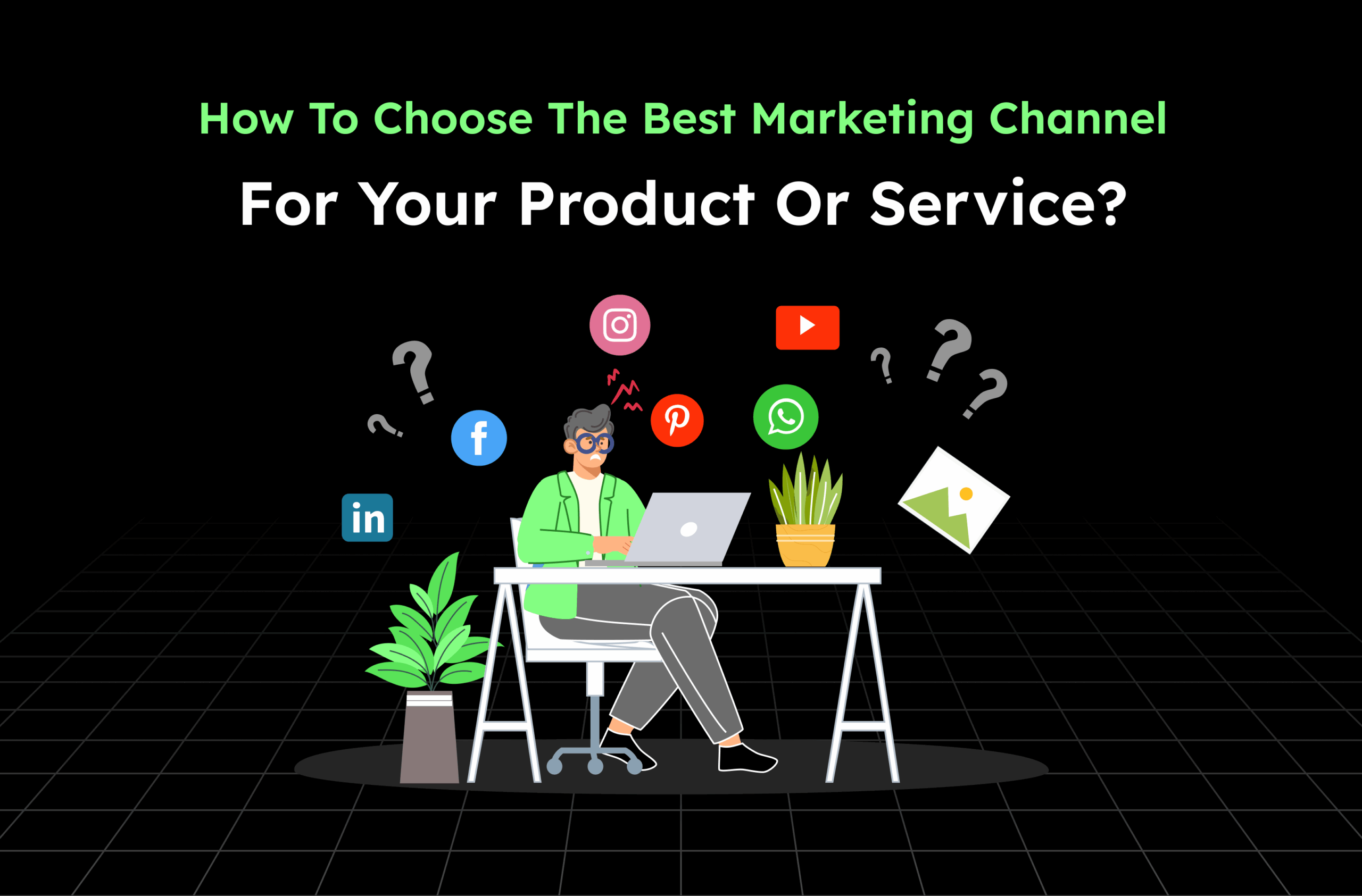
- April 8, 2025
- Rupesh Patel
How to choose the Best Marketing Channel for your Product or Service ?
Picking the right marketing channel isn’t easy.
One wrong decision, and your campaign might miss the mark entirely—wasting time, budget, and effort.
Take these two real cases.
- A dental expo used automated WhatsApp campaigns to invite dentists across Gujarat. They didn’t just send invites—they issued entry passes and tracked responses in real time. The result? 4,500 visits, a 20% jump from the previous year
- A local ice cream shop spent thousands on Google Ads but saw little impact. When they switched to a WhatsApp-based QR system at a public park, they started receiving orders instantly..
Same goals. Better results. Because the right channel matched the product and audience mindset.
This guide will help you do the same—choose the marketing channel that actually works for your product or service.
How to Pick the Right Marketing Channel for Your Product or Service ?
? Step 1: Understand What You’re Selling
Before you pick a marketing channel, you need to know how your product fits into your customer’s decision-making process.
Most products fall into one of two types:
✅ 1. Fast-Moving Products or Services (FMCG)
These are:
- Low-cost
- Bought quickly with little comparison
- Often emotional or impulse-based
Examples:
Snacks, cosmetics, fashion items, accessories, regular delivery services
Customer mindset:
“I see it. I like it. I want it now.”
✅ 2. High-Involvement Products or Services
These are:
- Expensive or complex
- Bought with research and trust
- Involve longer decision cycles
Examples:
Real estate, coaching, healthcare services, SaaS tools, online courses
Customer mindset:
“I need to think about this. Show me why you’re the right choice.”
? Step 2: Decide What You Want to Achieve with Your Campaign
Once you’re clear about your product type, the next step is to define your goal.
Most campaigns are built around one of these two outcomes:
✅ 1. Create Awareness
This means putting your product or service in front of as many relevant people as possible—even if they’re not ready to buy yet.
You want them to:
- Notice you
- Remember you
- Recognize your brand the next time they see it
You’re not asking them to act immediately. You’re making sure they know you exist and understand what you offer.
The focus is on visibility, consistency, and brand recall.
✅ 2. Drive Action
This means getting people to do something right now.
That could be:
- Clicking a link
- Making a purchase
- Registering for an event
- Booking a demo
- Starting a WhatsApp conversation
Here, the goal is clear, fast movement from attention to response.
You want to turn interest into action.
? Step 3: Pick the Right Channel Based on Your Product and Goal
Now that you’ve identified your product type and campaign goal, the next step is choosing where to run it.
The matrix below gives you a starting point—based on how each channel typically performs for different goals.
Use it to get a clearer sense of what’s likely to work best for your situation.
? Marketing Channel Matrix
| Channel | Fast-Moving: Awareness | Fast-Moving: Drive Action | High-Involvement: Awareness | High-Involvement: Drive Action |
|---|---|---|---|---|
| Google Ads | ? People don’t search casually | ✅ Works well for local intent | ✅ Helps early-stage researchers | ✅ Captures ready-to-act leads |
| ? Doesn’t suit B2C casual audience | ? Low engagement for impulse buys | ✅ Builds professional trust | ✅ Ideal for B2B outreach | |
| YouTube | ✅ Great for quick, fun brand visibility | ✅ Explainers with CTA perform well | ✅ Builds trust with long-form content | ✅ Converts with testimonials + demo CTAs |
| Twitter/X | ✅ Strong for trends, product drops | ? Good for flash links and updates | ? Expert posts work for niche awareness | ? Use for link sharing or discussions |
| ✅ Excellent for discovery via reels | ✅ High engagement with tags/stories | ? Visual proof works in remarketing | ? Use CTA stories or direct DMs | |
| ✅ Seasonal content has wide local reach | ✅ Boosted offers drive store/site visits | ? Good for community + retargeting | ? Use long-form or lead-gen ad formats | |
| ? Not built for cold outreach | ✅ Direct, quick engagement via QR | ✅ Great for sharing info post-inquiry | ✅ Converts through conversations + reminders |
| Label | Meaning |
|---|---|
| ✅ Strong fit | Channel aligns very well with the goal and product type |
| ? Supportive | Can be useful, but depends on how it’s used (secondary channel) |
| ? Not recommended | Doesn’t suit the product type or goal well; low priority |
? Thanks for Reading
Hope this guide helped you get more clarity on where and how to promote your product or service.
If you have feedback or suggestions, we’d love to hear from you.
Feel free to reach out — your thoughts help us improve what we share next.
? Looking for Support ?
If you’re using WhatsApp in your marketing mix, UpMatrix can help you handle leads, replies, and follow-ups — all in one place.
We built it to support small and growing businesses that want to stay responsive and close more conversations.
? Want to see it in action?